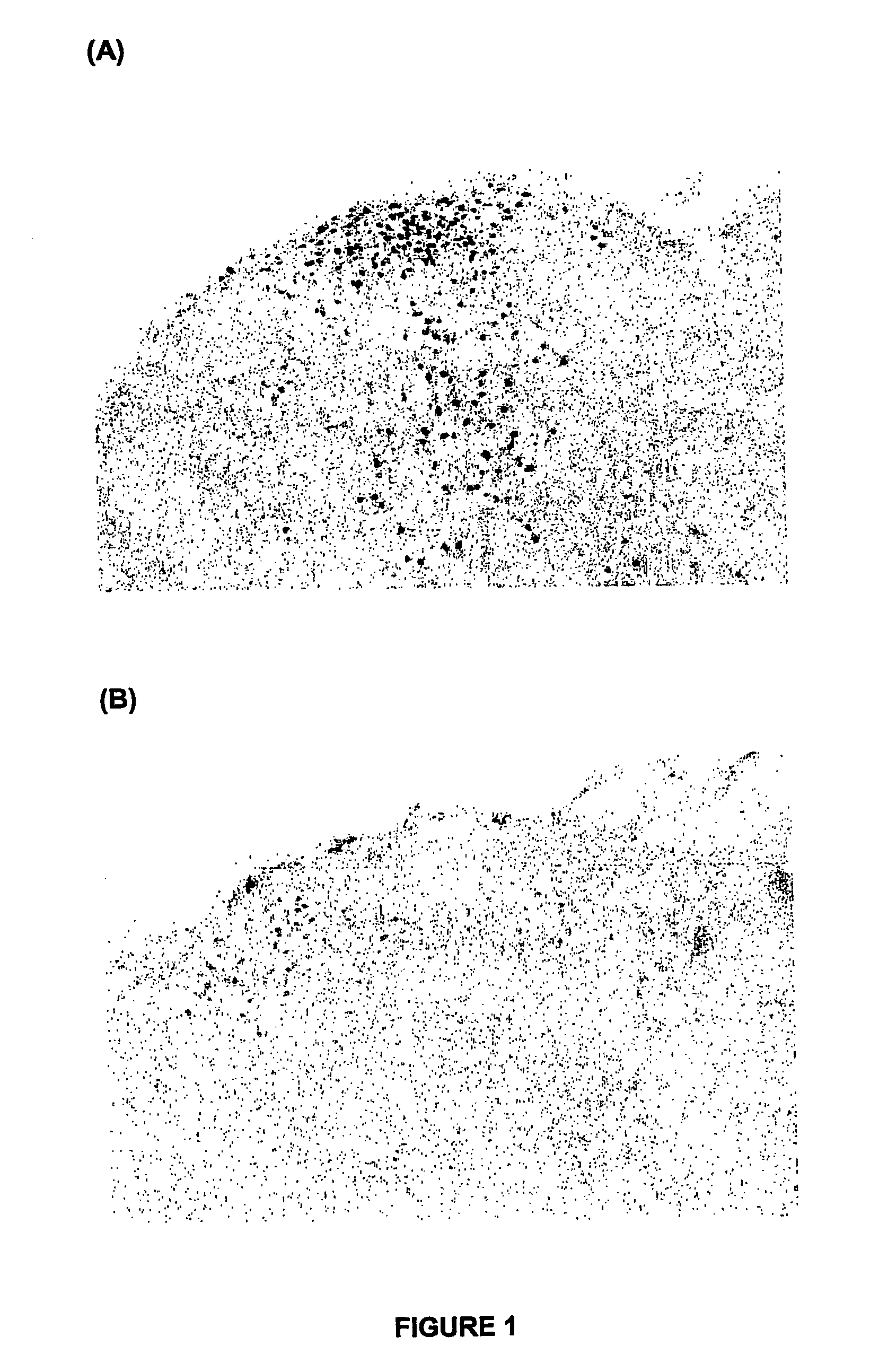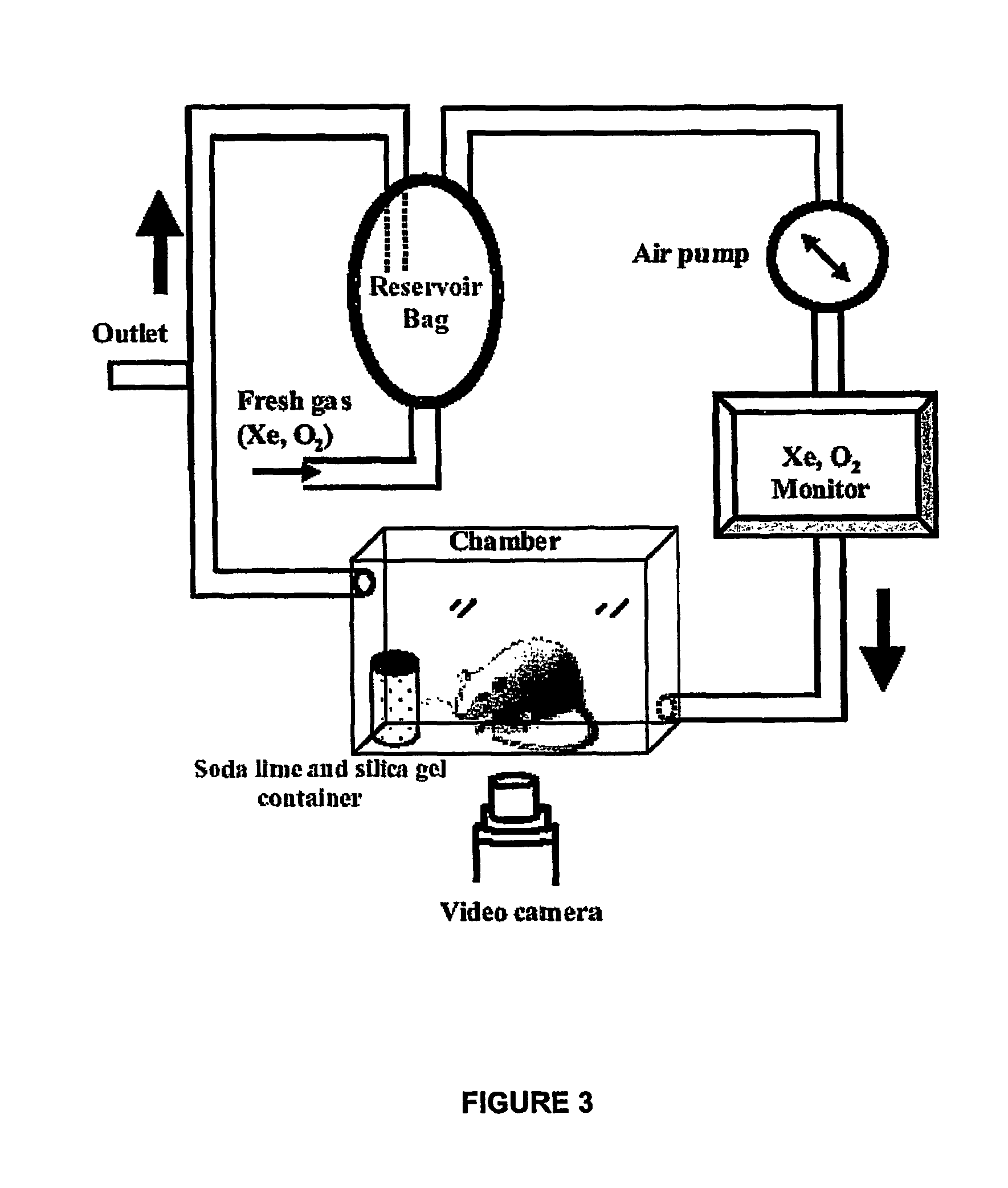Analgesic agent for newborn or fetal subjects
a technology for analgesic agents and newborns, applied in the direction of biocide, drug compositions, nervous disorders, etc., can solve the problems of long-term physiological and psychological consequences, ineffective nitrous oxide (nsub>2/sub>o) in neonatal rats, and ineffective nitrous oxide as analgesic agent in subjects
- Summary
- Abstract
- Description
- Claims
- Application Information
AI Technical Summary
Benefits of technology
Problems solved by technology
Method used
Image
Examples
example 1
[0059]The analgesic efficacy of xenon was investigated in a neonatal rat pup. A 7 day neonatal rat pup is known to be developmentally equivalent to a human full term fetus with respect to pain processing pathways.
[0060]A 7 day old rat was injected with formalin into the hindpaw during exposure to either air or xenon (70% v / v). 90 minutes later the animal was killed and the spinal cord removed; evidence of activation of pain-processing pathways by formalin was sought by counting the number of cFos positive neurones in the dorsal horn of the spinal cord.
[0061]In FIG. 1, xenon almost completely attenuated formalin-induced c-Fos positive neurones (air). By comparison a normally analgesic dose of nitrous oxide in the adult rat did not change formalin-induced c-Fos positive neurones (FIG. 2).
[0062]From the results, it can be concluded that xenon interrupts pain processing so that pain signals will not travel to the brain and hence pain, as well as the long-term consequences of untreated p...
example 2
Materials and Methods
General Procedures and Animals
[0063]The study protocol was approved by the Home Office (UK), and all efforts were made to minimize animal suffering and the number of animals used. Fischer rats were used for the entire study (B&K Universal, Grimston Aldbrough Hull, UK). The rats were provided ad libitum food and water, and artificial lighting between 6 a.m. and 6 p.m. The age of each animal was determined from the body weight, based on a previously established growth curve (Hashimoto et al., 2002). (The date of birth was defined as 0 day-old.) Experiments were performed on rat pups of 7, 19, 28 day-old and on adult rats (11-12 week-old).
[0064]Within each age-group, there were three cohorts (n=3 - 4) “Air+formalin”, “Xenon+formalin” and “Air+saline” cohorts. In the Air+formalin group, animals exposed to air were injected with 5% formalin into the plantar surface of their left hind paw subcutaneously. In the Xenon+formalin group, animals exposed to 70% Xe / 20% O2 / 10...
PUM
 Login to View More
Login to View More Abstract
Description
Claims
Application Information
 Login to View More
Login to View More - R&D
- Intellectual Property
- Life Sciences
- Materials
- Tech Scout
- Unparalleled Data Quality
- Higher Quality Content
- 60% Fewer Hallucinations
Browse by: Latest US Patents, China's latest patents, Technical Efficacy Thesaurus, Application Domain, Technology Topic, Popular Technical Reports.
© 2025 PatSnap. All rights reserved.Legal|Privacy policy|Modern Slavery Act Transparency Statement|Sitemap|About US| Contact US: help@patsnap.com



